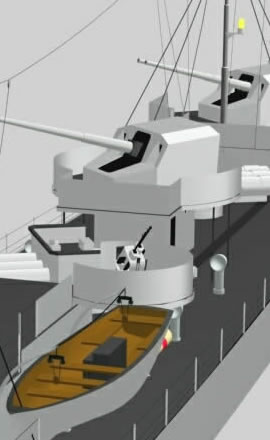
This is a work of historical and photographic investigation, a work made in Argentina. On it are based all the necessary designs and drawings to make this site. I am at 14000Km of the main research and data sources, and I could only explore on the available bibliography and images obtainable in Argentina.
Of course I had found a great number of images in Internet, in the sites on Italian Navy and their ships. I am deeply grateful for had used them, and in the page My Favorite Links in this work, I referred to these diverse and significant sites with all my recognition. Without them and their help, I could not finish this work.
I made photographic analysis of the images to verify every possible feature, and subsequently I developed a basic 2-D plan drawing, one 2-D plan for each of the eight classes of destroyers, as approximated to reality as possible, working within the maximum possible rigour.
On these 2-D plans, I designed and developed the right 3-D ships that exist in the virtual space. When I completed each vessel, she receives the painting, as similar as possible to the colours used in the ships; I had designed the surroundings and scenario and provided the illumination required to obtain the images for this site.
The level of the images are adequate to mi propose to finished the site. The priority is to show 3D renderizations as accurate as possible to what the real ship was; this point is before the artistic excellence of an image.
In a work of this size could be errors of course, and I would appreciate any observation, or opinion.
I am Hugo von Zeschau; this work was made with the collaboration of my sons Hugo Alejandro and Pablo von Zeschau and my nephew Gustavo Montagna von Zeschau.